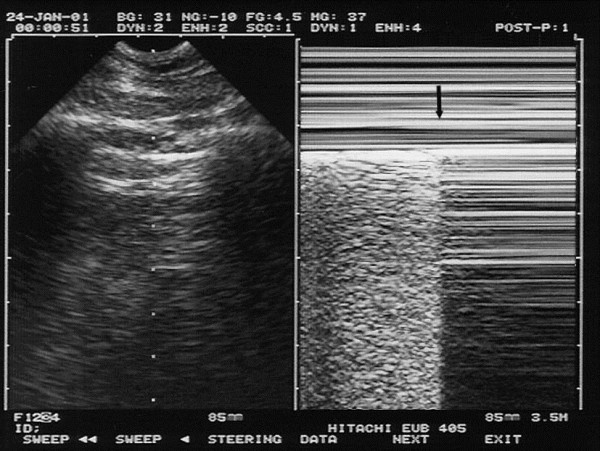Figure 7.

Pneumothorax and the lung point. A specific sign of pneumothorax. Real-time mode allows detection of the inspiratory increase in volume of the collapsed lung. When reaching the chest wall where the probe is laid, it makes a sudden change in the ultrasound image, from an A’-profile to an A- or B-profile usually. The change is sudden because (using an appropriate equipment, without average filters or time lag mainly) ultrasound is a highly sensitive method, able to detect subtle changes, such as the difference between free gas and alveolar gas. The left image shows the pleural line just before the visceral pleura appears. The right image shows (arrow) the very moment the visceral pleura has touched the parietal pleural. This sign has been called lung point (it can be seen along a line, but one point is sufficient for the diagnosis). Video visible at CEURF.net. Extract from “Whole body ultrasonography in the critically ill” (2010 Ed, Chapter 18), with kind permission of Springer Science.
